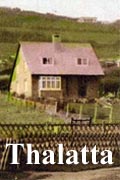
Thalatta Deeds - the start of the search for the History of the Manor
All the information on this website derives from an interest in the Manor of Charmouth. It was the observation on my Title Deeds that my house, Thalatta had once formed part of the Manor of Charmouth. What made it more interesting was the fact that in 1922 when the field was bought by a Miss Grace Icombe, there was still a Lord of the Manor after all those centuries. In due course I was able to trace a continuous line of Lords stretching back a 1000 years right up to date with the current Chairman of Charmouth Council, Mr Mallory Hayter who has served that position for the last 18 years.
For many centuries the Lord owned virtually all the properties in the village. Each subsequent person has sold various fields and buildings until today it only accounts for an area along Charmouth's Shoreline including the beach and the Heritage Centre ( Old Cement Works). I have consulted many books and articles and visited a number of Archives and Libraries on my search to find the history of the Manor.
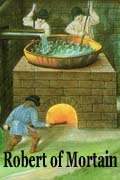
The Domesday Book shows that Charmouth was owned by Robert, Count of Mortain. William de Estre was probably the Lord of the Manor under him, as it was his grandson Richard who was later to give it to Forde Abbey. The primary activity is salt production in lead pans from which the seawater was boiled and the remaining salt scraped off the sides. Three villagers and sixteen salt workers are shown living here in 1086. Charmouth was not alone in salt production as a number of Salt workers are shown in Lyme and many other nearby coastal towns.
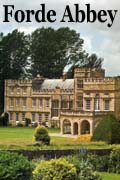
1170 Forde Abbey
The Manor of Charmouth is granted to Forde Abbey by Richard del Estre in about 1170 and confirmed by King Richard I in 1189. The Abbots of the Cistercian Abbey were to be Lords of the Manor of Charmouth for almost four centuries. It was to form only a small fraction of their total land holding of over 30,000 acres.
The great leap forward in the fortunes of Charmouth was to be the creation of a borough here by the Abbot of Forde Abbey in 1297. The Charter is very detailed and is descriptive of the village at that time with mention of a Mill, Pillory, Guildhall, Chapel and Cross. It was to be planned as a new town with a number of adjoining plots of land, roughly half an acre in size stretching back on both sides of “the Street”.
1564 Robert and William Caldwell
There is a copy of the original Charter dated 1564 in the Dorset Record Office from Queen Elizabeth I where she grants the Lordship of Charmouth to Robert and William Caldwell, Gentlemen, and their heirs for just £25.5.1d. But their ownership was very brief, as before the year was out they had sold it on to Sir William Petre.
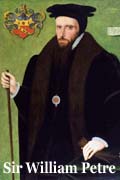
1564—1575 Petre Family
(i) Sir William Petre (1505-1572)
Sir William was immensely wealthy and used his position of Secretary of State under four Monarchs to improve his position. He is known to have had over 36,000 acres in Devon alone.
(ii) Sir John Petre (1549-1613)
John Petre was the only surviving son of the statesman Sir William Petre by his second wife Anne, daughter of William Browne. He sat as a M.P. for Essex from 1584 to 1587 and also served as Lord Lieutenant of Essex. In 1603 he was raised to the peerage as Baron Petre, of Writtle in the County of Essex by James I. He publicly acknowledged that he was a Roman Catholic and his descendants have remained loyal to Catholicism ever since.
Both the present day “Elms” and “Limes” on the Street have deeds that show in 1575 they belonged to Sir John Petre and were being leased for 2,000 years by him.
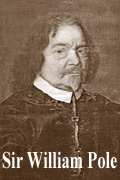
1575-1648 Pole Family
The Pole Family seem to have left no lasting memorials in Charmouth , though they were to own it for a long time. It was one of a number of estates they had purchased in proximity to their seat at Shute, Axminster.
(i) William Pole (1515-1587)
William Pole purchased the " house, materials and furniture of Shute House for £300 in 1560 from Sir William Petre. Shortly after this, he acquired the lease of an additional eight score acres of land at Shute. Later in 1575 he was to have further dealings with Sir William Petre when he purchased the Manor of Charmouth.
(ii) Sir William Pole (1561-1635)
One of the more famous Lords of the Manor of Charmouth was Sir William Pole who meticulously recorded the history of Devon and its illustrious families.
(ii) Sir John Pole (1588-1658)
For many years Sir John was Member of Parliament for Devonshire, and lived in London for long periods.He was created a Baronet by Charles I in 1628
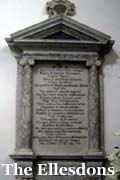
The Ellesdons (1648-1737)
The Ellesdons had been successful merchants in Lyme since the 15th century and had been Mayors of the town on frequent occasions. They lived in a mansion near the Church and there are records of “Ellesdons Lands” in the Manor rentals.
(i) Anthony Ellesdon (died 1655)
In 1649 Anthony was to purchase Newlands Farm, which had formerly been part of Charmouth Manor from descendants of the Wadhams. Stonebarrow Manor may well have been a home to the Ellesdens in due course.
(ii) William Ellesdon
Perhaps Charmouth`s most famous son thanks to his role in one of the most exiting episodes in British History. For on 22nd September 1651 Charles II was to spend just one night in Charmouth, but its repercussions were to be momentous.
(iii) Anthony Ellesdon (1654-1737)
Most of Anthony's life was to be spent in Charmouth and he is often referred to in Deeds and documents of the time. He would have no doubt lived in the Manor House, which would have been more imposing than what we see today after being subdivided and altered in the 19th century.
His nephew was to commission an elaborate marble monument to his uncle, which was transferred when the present church was built in 1836.
(iv) Richard Ellesdon Henvill (died 1744)
Anthony Ellesden in his will gives a substantial proportion of his wealth to his two nephews, Richard Ellesdon Henvill and Charles Henvill. It seems Charles is to stay in Charmouth and is married to Elizabeth Hodder and both are later buried here. His brother becomes Lord of the Manor, but it is probably Charles who lives in the Manor House. For Richard is often described as a Bristol Merchant and is very active in the Tobacco and Slave Trade.
(v) Benedicta Durston (1727-1779)
In 1744 at the age of just seventeen Benedicta Henvill inherits her fathers Estate which includes the manor of Charmouth and also the adjoining Manor of Catherstone. She is to later marry the Rev. Joseph Durston,Vicar of Compton Greenfield in Gloucester.
(vi) Francis Phipps Henvill (died 1783)
The Manor of Charmouth finally ends up being owned by a Merchant living with his family on the Island of St. Kitts in the West Indies. But it is only for four years as he is to die in 1783 and the Manor is put up for sale.
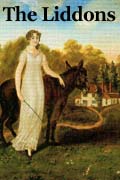
The Warden /Liddon Family 1783-1854
After the long association of the Ellesdon/Henvill family with Charmouth, another family was to take their position as Lords of The Manor. Many of them had associations with the Navy and were to live in the area.
James Warden ( died 1792)
In 1783 on the death of Francis Phipps Henvill the Manor of Charmouth was purchased by Lieut. James Warden R.N. If Warden occupied the Manor House, opposite the church, it cannot have been for long as he went to live at Langmoor and the Manor house He had a fiery temper and even disowned his own son, who was to receive just £20 a year during his life. In 1789 he won an action against the Rev. Brian Combe and others for removing sand and seaweed from the beach.
His arguments climaxed with a disagreement with a neighbour, Norman Bond that resulted in a duel at Hunter's Lodge Inn with James being shot through the heart and the neighbour fleeing the country to Barbados.
Ann Liddon, nee`Warden ( 1764- 1849)
James and Elizabeth warden were to have three children. The eldest Captain William Weeks Wharton Warden lived most of his 90 years in Charmouth receiving just £20 a year as his inheritance. It was his sister Ann who was to become Lady of the Manor on the death of her mother in 1798.
Matthew Liddon ( 1800- 1864)
The Naval Records for Matthew held at the Public Record Office are quite informative and show him rising from Masters Mate in 1822 to Lieutenant in 1828. He retired in 1860. At the time of his mother's death he had a house called “The Grove” in Axminster . Shortly afterwards in 1853 he put the Estate up for sale .
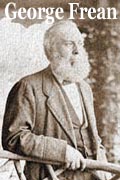
George Hender Frean (1824-1903)
Almost everyone has heard of Peek Freans Biscuits. It is interesting to speculate why one of its founders– George Hender Frean should be the Lord of the Manor of Charmouth for 10 years. He is shown as buying Langmoor Manor and the Manor of Charmouth from Captain Matthew John Liddon when it was put up for auction in 1853 . George Frean is described as a Miller living in Plymouth at the time. But his life and fortune were to change in 1857 when he started up a factory in Dockhead, London with his relation James Peek as one of the pioneers of biscuit making. Nine years later they moved to Clements Road where the factory remained until 1989. The biscuit factory provided Bermondsey and Rotherhithe with a major source of employment and for decades was known as Biscuit Town.
George never lived at Langmoor as he is shown in their deeds as selling the House and 25 acres of grounds in 1854 for £3,400 to Ann Farwell Moly of Hawkchurch. Though he did retain the Manor of Charmouth until 1864 when it was put up for auction. George is described as “Lord of the Manor” in Directories of the time. He owned the ground surrounding the present Heritage Centre and there is a record of him leasing the area where the Customs Officers had their Lookout and Gun for £3 a year.
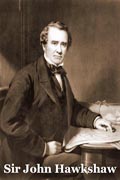
Sir John Hawkshaw ( 1864– 1870)
Another mysterious owner of the Manor of Charmouth is the famous Civil Engineer Sir John Hawkshaw. He bought the properties in 1864 when they were put up for sale. It was not until I was looking through Charmouth Papers in the Devon Archives in Exeter that I found out why he had bought the Estate. The detailed plans for a proposed Railway linking Lyme Regis, Charmouth and Axminster (D. R.O. QS/DP/315 1864 ). n the same year revealed that the Engineer behind it was none other than Hawkshaw. He even describes himself as Lord of the Manor. A man ahead of his time, but unfortunately he was unable to finance it and Charmouth was never to be linked to the main line. If it had gone ahead the station would have been in the present day recreation field off Barr`s Lane, behind the Street. He was never to live here, but was instrumental to bringing the first water supply to the village. The water was obtained from a spring in a field in 1865, W. Travers being the farmer. The first sod of the waterworks was cut on June 15th by Mrs. Norris, the wife of Dr H. Norris. the company repaired to a field, where wine and beer were distributed to drink success to the undertaking. Dancing afterwards commenced and was kept up with much spirit for some time. The waterworks were a great benefit to the place and the thanks of the inhabitants were expressed to Mr John Hawkshaw, the Lord of the Manor, for coming forward so liberally in the matter. Taps were placed by the sides of the Street for the use of those who did not possess a well and pump. With the failure of the planned railway, the manor was again put up for sale in 1870.
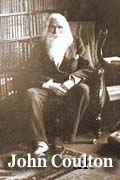
John James Coulton ( 1818-1908)
John James Coulton was to be Lord of the Manor of Charmouth for almost 40 years and yet there are few records concerning him or reasons for him owning the Estate. He was the son of a father of the same name who ran an established firm of Solicitors in King's Lynn. He lived in Pentney and was a elected 3 times for the position of County Councillor of Norfolk. He also succeeded his father as Clerk of the Guardians of the King`s Lynn Union in 1840. 1896 The Parish records show him bringing an action for taking stones from his beach. This seemed a common occurrence and various Lords of the Manor are shown prosecuting culprits. His decision in 1898 to sell off a large area of fields bordering Higher Sea Lane as planned building site with a large number of houses was to have a profound effect on the layout of the village. Unfortunately only a few lots were sold. Undeterred he tried again in 1904, but this time no one turned up for the Auction . Some of the plots were sold on afterwards and Higher Sea Lane slowly was built on over the century. In 1902 he is shown as selling a piece of land to Bessie Lessiter and on this she was to build the unusual “Red Bungalow”. One of his sons was George Gordon Coulton, the famousBritish historian, known for numerous works on medieval history.
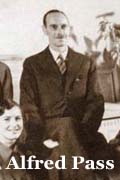
Alfred Pass ( 1908—1970)
Alfred Capper Pass bought the nearby Wotton Fitzpaine Estate in 1895 and went on to buy the Monkton Wyld and Abbotts Wootton Estates and subsequently added the Manor of Charmouth in 1908 for £1400. By then it consisted of the old Cement Works building and 63 acres of land mainly along the coast with the potential to be built on.
Alfred was born in St Philip's Marsh, Bristol where his father worked as a metal refiner and dealer. When he was a small boy the company moved to Mill Lane in Bedminster—much larger premises near to the local coal mines. The family lived in Windmill Hill. Throughout the 1840s the firm prospered, processing gold and silver as well as lead and copper ores and the family moved to Redland. In 1870 Alfred's father died, and he took over the business where he was well regarded by his workers.Wages were paid at higher rates than the local iron foundry—they were even higher than at Fry's cocoa works, and they were noted as generous employers. He helped a fledgling Bristol University get on its feet and remained a major benefactor until his death. There is still a Alfred Capper Seat of Chemistry to this day. The factory went over to making tin alloy and from 1875 to 1882 the size of the Bedminster works doubled. In 1905 Alfred died and the firm, which had now become a public company, was managed by non-family businessmen. His son Alfred Douglas Pass continued to live at Wootton Fitzpaine Manor and the remainder of the estate was sold off piecemeal until his death in 1970. The present Lord of the Manor of Charmouth is a mystery and it may still be with the Pass family.
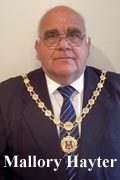
Mallory Hayter, Chairman of Charmouth Parish Council from 1993
In 1934 Charmouth Parish Council took out a lease with Alfred Douglas Pass on the Old Cement Works and the area around with an option to buy. This they took up 4 years later by paying £2970 for the freehold. Altogether they borrowed £4206 from the Dorset Council and Ministry of Health to complete the sale and make repairs. It was a popular decision and was carried unanimously by the Council at the time. Until they acquired it the beach had belonged to the Lords of the Manor of Charmouth.
The parish now owns its own foreshore with all the rights from low to high tide and since 1938 it has been the Chairman of the Parish Council who has held the position of Lord of the Manor. It is fitting that our current Chairman, Mallory Hayter is Lord as the story becomes almost full circle as he was instrumental in the advantageous purchase of the Elms in 1996 on very favourable terms to the electorate, with it never being a burden on the rates. This building dates back to the time when the Abbot of Forde was the Lord of the Manor of Charmouth.